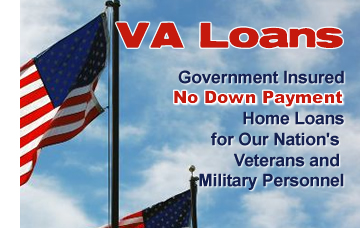 While standards for conventional mortgages are increasingly tighter, VA loans remain as one of the more straightforward and easiest to qualify for. Originating in 1944, the program passed the 20 million mark in December 2012, does not require down payments, and continues to have the fewest red tape out of other government loans.
While standards for conventional mortgages are increasingly tighter, VA loans remain as one of the more straightforward and easiest to qualify for. Originating in 1944, the program passed the 20 million mark in December 2012, does not require down payments, and continues to have the fewest red tape out of other government loans.
Who is eligible for a VA loan? Generally, veterans who have served on active duty (a minimum of 90 days of wartime and 180 continuous days of peacetime service) and their families have the opportunity to apply. Specifically, however, veterans enlisted after September 7, 1980 and officers after October 16, 1981 have a two-year requirement. National Guardsmen and reservists, on the other hand, have a six-year requirement.
Application for a VA loan is similar to that for other government programs but with differences: specifically, the borrower must apply for a Certificate of Eligibility first and is expected to get an appraisal from the VA. Nevertheless, lenders may be able to speed it up by being approved for automatic processing or, through the Lender Appraisal Processing Program, being able to close a mortgage on the basis of the VA’s appraisal.
As with other government mortgages, credit and debt-to-income ratio requirements are lower, but borrowers must still be aware. A borrower’s credit history, reviewed by the VA, must be satisfactory, and he or she must be two years out of Chapter 7, one year out of Chapter 13 bankruptcy, and over two years past foreclosure with good credit. However, borrowers with no or insufficient credit history may be eligible through proving his or her ability to make payments on rent, utilities, and telephone bills.
VA loans guarantee a maximum of 25 percent on a loan up to $104,250, or out of $417,000. A borrower’s debt-to-income ratio, in this case, cannot exceed 41 percent.
Additionally, borrowers must realize that closing costs are not included in the mortgage but can be rolled into the purchasing price. One is the funding fee, required by law and now 2.15 percent on no-down payment loans for first-time homebuyers. The fee is moved up to 3.3 percent for second-time homebuyers.

 NMLS: 2576 | CT LICENSE: 1101 | MA LICENSE: LS2576 | MI LICENSE: FR0023580
NMLS: 2576 | CT LICENSE: 1101 | MA LICENSE: LS2576 | MI LICENSE: FR0023580